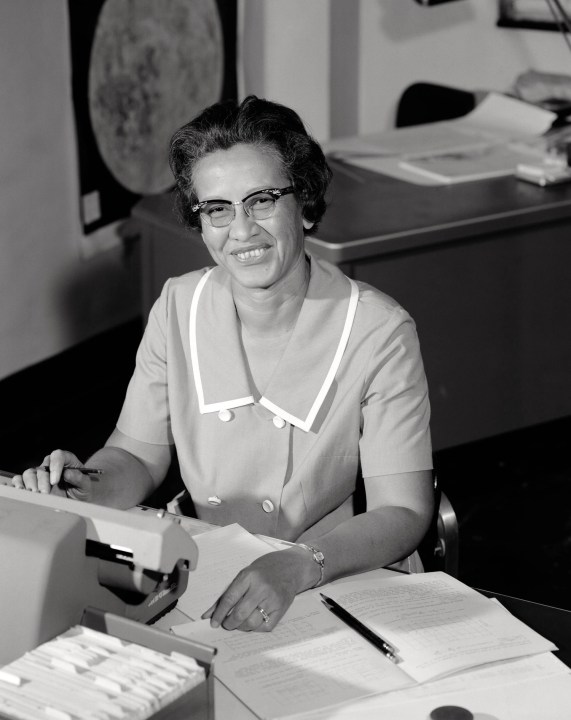
Pioneering mathematician Katherine Johnson, responsible for the computations used in some of NASA’s earliest forays into spaceflight and for the Apollo mission to the moon, has died. She was a trailblazer for Black Americans and women in science and engineering, at a time when the field was dominated by white men.
Johnson was born on August 26, 1918, in White Sulphur Springs, West Virginia. She excelled at school and took up graduate studies in mathematics, becoming one of the first three Black students to integrate graduate schools in the state. She was hired by the National Advisory Committee for Aeronautics, the precursor to NASA, in June 1953, where she worked at the Langley laboratory in the West Area Computing section.
She began work as a “computer,” one of a team of Black women who performed vital calculations for the burgeoning space program in the era before PCs were available. She quickly became known for her expertise in geometry and her skill at her work, being requested by other departments to work on tasks such as analyzing test flight data and investigating the causes of plane crashes.
When the space race began in the late 1950s, Johnson worked on the earliest NASA programs in space flight, including calculating the trajectory of the flight for the first American in space, Alan Shepard.
“The early trajectory was a parabola, and it was easy to predict where it would be at any point,” Johnson said in a 2008 interview for NASA. “Early on, when they said they wanted the capsule to come down at a certain place, they were trying to compute when it should start. I said, ‘Let me do it. You tell me when you want it and where you want it to land, and I’ll do it backwards and tell you when to take off.’ That was my forte.”
As the early space flights become more complex, NASA turned to computing machines for its calculations. But the agency still relied on experts like Johnson to verify the figures, including for the 1969 Apollo mission to the moon. “You could do much more, much faster on computer,” Johnson said. “But when they went to computers, they called over and said, ‘tell her to check and see if the computer trajectory they had calculated was correct.’ So I checked it and it was correct.”
Over her career, Johnson co-authored 26 scientific papers, and was awarded the Presidential Medal of Freedom by President Barack Obama in 2015 in recognition of her services. She became best known in the public imagination after the release of the 2016 film Hidden Figures, which portrayed the life of Johnson and several of her colleagues during the space race, in which she was played by Taraji P. Henson.
Johnson passed away on February 24, at age 101.
Update 02/24/20: In a statement, NASA administrator Jim Bridenstine commended Johnson for her contributions to the space program and her leadership in the organization:
“NASA is deeply saddened by the loss of a leader from our pioneering days, and we send our deepest condolences to the family of Katherine Johnson. Ms. Johnson helped our nation enlarge the frontiers of space even as she made huge strides that also opened doors for women and people of color in the universal human quest to explore space. Her dedication and skill as a mathematician helped put humans on the moon and before that made it possible for our astronauts to take the first steps in space that we now follow on a journey to Mars. Her Presidential Medal of Freedom was a well-deserved recognition.
“At NASA we will never forget her courage and leadership and the milestones we could not have reached without her. We will continue building on her legacy and work tirelessly to increase opportunities for everyone who has something to contribute toward the ongoing work of raising the bar of human potential.”
Editors' Recommendations
- NASA renames its headquarters after ‘Hidden Figure’ Mary Jackson
- How to watch the SS Katherine Johnson spacecraft launch today
- NASA astronaut Christina Koch breaks record for longest spaceflight




